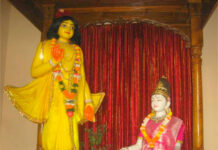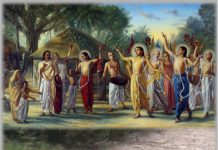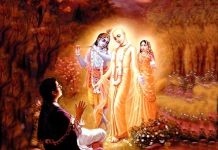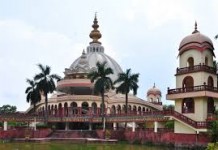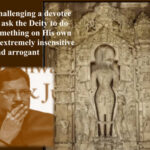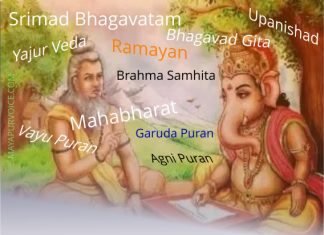The major surviving temples of the 64 Yoginis, commonly termed as the ‘Chausath Yogini” shrines are two in Orissa and two in Madhya Pradesh in India.
The term ‘Yogini’ called in par language as ‘Jogini’ is the feminine term for a yogi. As a part of the Yogic school of Hindu tradition, they were a part of the Nath Yoga tradition. Some texts refer to the sacred feminine force as incarnation of a particular aspect of Godess Parvati. They are worshipped in many places as “Gram Devatis”. Other counterparts as mentioned in the Skanda Purana with Yoginis are the Shaktis, Bhairavis, etc.
In the Chandi Purana, the term Yogini refers to the form of godess or Devi, and each Yogini was seen as a different part of the Goddess’s body. There are supposed to be eight Matrikas, who arrive with their eight attendants making the group as 64 Yoginis.

Ideally, a Chausath Jogini temple is a Hypaethral temple, that one with no roof. The architecture provides sustenance and support in the tantrik prayer rituals involving the worship of the Bhu-mandala.
Legend has it that Goddess Durga took the form of 64 demi goddesses to defeat a demon. These Joginis were then given their place in the temple. They are depicted as either standing on an animal or a demon head.
The 64 Yogini Temple in Morena
This temple is located in the Morena district of Madhya Pradesh. It is also well known by the name of Ekattarso Temple. This particular temple is still in very good shape.
Located in Mitaoli or Mitawali village of the Morena district, it has Lord Shiva is at the centre, and has a circular wall with 64 chambers, an open Mandapa, also separated by a circular courtyard.
It is widely believed that the Sansad Bhawan or the Parliament House in Delhi has also been built on exactly the same lines of the Chausath Yogini Temple of Morena.
Apart from the prime deities as Lord Shiva and Goddess Durga, the 64 shrines in a circular pattern are one for each Yogini.
Known to have shikhars over the main shrine and the subsidiary ones, these shikhars are not present now. The slabs on the roof and walls have perforations in them that were used to collect the rain water. This structure has withstood the earthquakes of the millennia without any damage whatsoever to the circular structures.
Apart from the religious and architectural brilliance, this temple was well known as a ‘Tantrik Vishwavidyala’. Even foreigners used to come here to study tantra as a means of divine worship, only propagating the divine attainment by virtuous study. Even today sadhakas can be seen practicing here.
The Chausath Yogini Temple at Khajuraho
Amongst all the Yogini temples, this is the only one with a rectangular architectural plan. Located on a high platform, it is made up of large granite blocks with an open courtyard at the centre. Out of the total 65 shrines, only 35 survive now. The central shrine faces the north, and was originally one for Goddess Durga. The temple is in ruins now, and has got no sculptures. Amongst 3 large statues of Goddess are located at the Khajuraho museum.
This temple appears scary to some tourists visiting here.
The Hirapur Temple in Bhubaneshwar
This temple in Hirapur in the state of Orissa is a roofless temple. This temple is also believed to have been built by Queen Hiradevi, in the 9th century, it is also built on the same lines as the temple at Morena, with a circular wall housing the 64 yoginis in the enshrined cavities.
Mahamaya being the principal Goddess here, the Devi is adorned with red cloth and vermilion. The Yogini deities are carved with black chlorite. The ornaments are highly symbolic being the bracelets, armlets, necklaces, anklets, earrings, garland and the headdress. The hairstyles are also either a one sided bun or a coronet of interlocking curls. Some are shown depicted with two arms, while some have four.
Here Godess Kali can be seen standing on a demon head. It has a Chandi Madap, with eight goddesses on all four sides.
The Ranipur Jharial Temple of Orissa
Also known as the “Soma Tirtha’, it is in the Balangir District of Orissa. Dating back to the 9th century to the reign of the Somavanshi Keshari kings, the cultural assemblance of India flourished with Shaivism, Vaishnavism and Buddhism.
This temple is another hypethral structure that gives an insight to the medieval occult practices, some of them are still prevalent in some districts of Orissa along with tribal traditions.
This temple has a three faced deities of Lord Shiva along with Goddess Parvati, encircled by the 64 yoginis. It is mainly regarded as a virtuous Shaiva Teerth. The Muslim invasion here in the 15th century was mainly the cause of its downfall.


